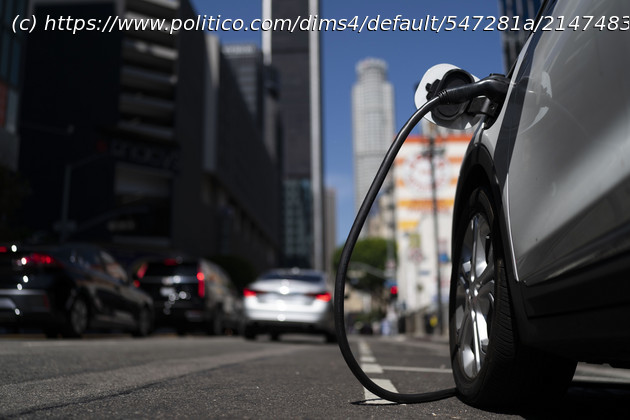The EPA says the industry could meet the limits if 67% of new-vehicle sales are electric by 2032, a pace the auto industry calls unrealistic.
The U.S. government’s most ambitious plan ever to slash planet-warming greenhouse gas emissions from passenger vehicles faces skepticism both about how realistic it is and whether it goes far enough.
The Environmental Protection Agency in April announced new strict emissions limits that the agency says are vital to slowing climate change as people around the globe endure record-high temperatures, raging wildfires and intense storms.
The EPA says the industry could meet the limits if 67% of new-vehicle sales are electric by 2032, a pace the auto industry calls unrealistic. However, the new rule would not require automakers to boost electric vehicle sales directly. Instead, it sets emissions limits and allows automakers to choose how to meet them.
Even if the industry boosts EV sales to the level the EPA recommends, any reduction in pollution could prove more modest than the agency expects. The Associated Press has estimated that nearly 80% of vehicles being driven in the U.S. — more than 200 million — would still run on gasoline or diesel fuel.
Pointing to surging temperatures and smoke from Canadian wildfires that fouled the air over parts of the U.S. this summer, Dan Becker, director of the safe climate transport campaign at the Center for Biological Diversity, said: “We need to do a hell of a lot more.”
He wants the EPA to slash emissions even further.
Carbon dioxide and methane levels in the atmosphere keep rising. Scientists say July will end up being the hottest month on record and likely the warmest human civilization has seen. The Earth is only a few tenths of a degree from the goal set out in the 2015 Paris Agreement on climate change of limiting warming to 1.5 degrees Celsius (2.7 degrees Fahrenheit) since pre-industrial times.
Though a panel of United Nations scientists said in March that there was still time to prevent the worst harm from climate change, the scientists said the world would need to quickly cut nearly two-thirds of carbon emissions by 2035 to avoid weather that is even more extreme.
Start
United States
USA — Science The EPA’s ambitious plan to cut auto emissions to slow climate change...






